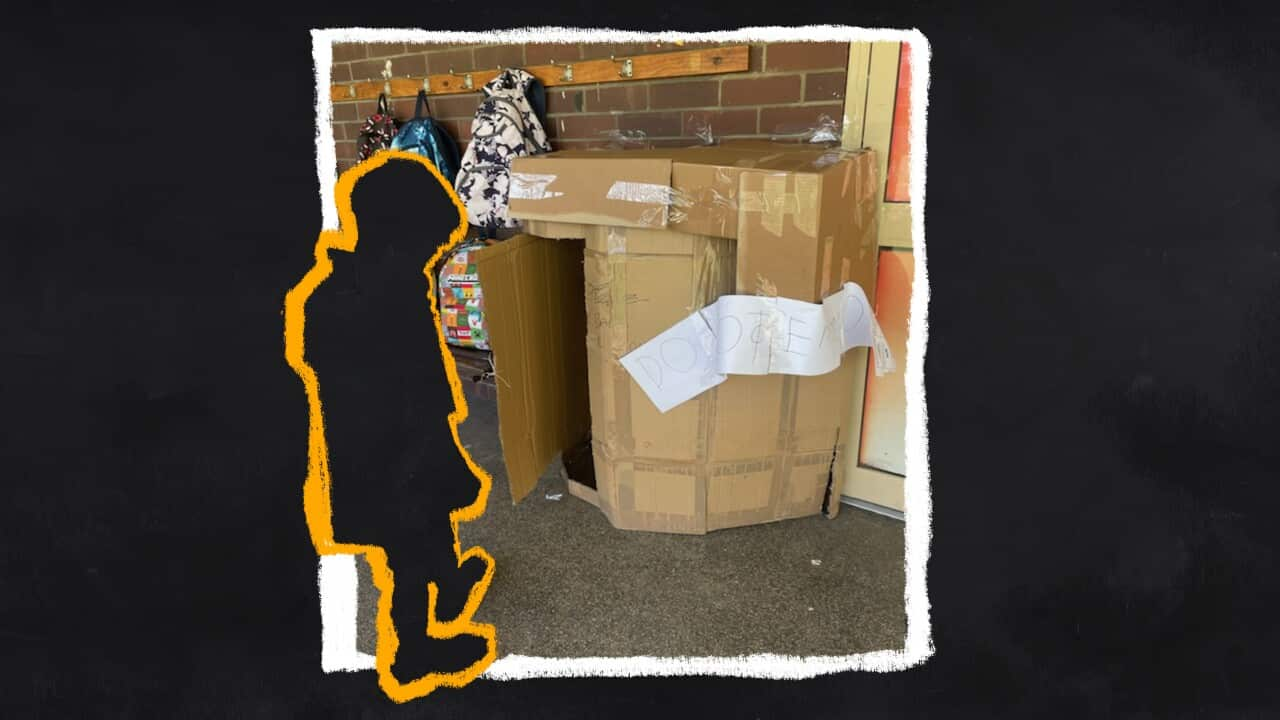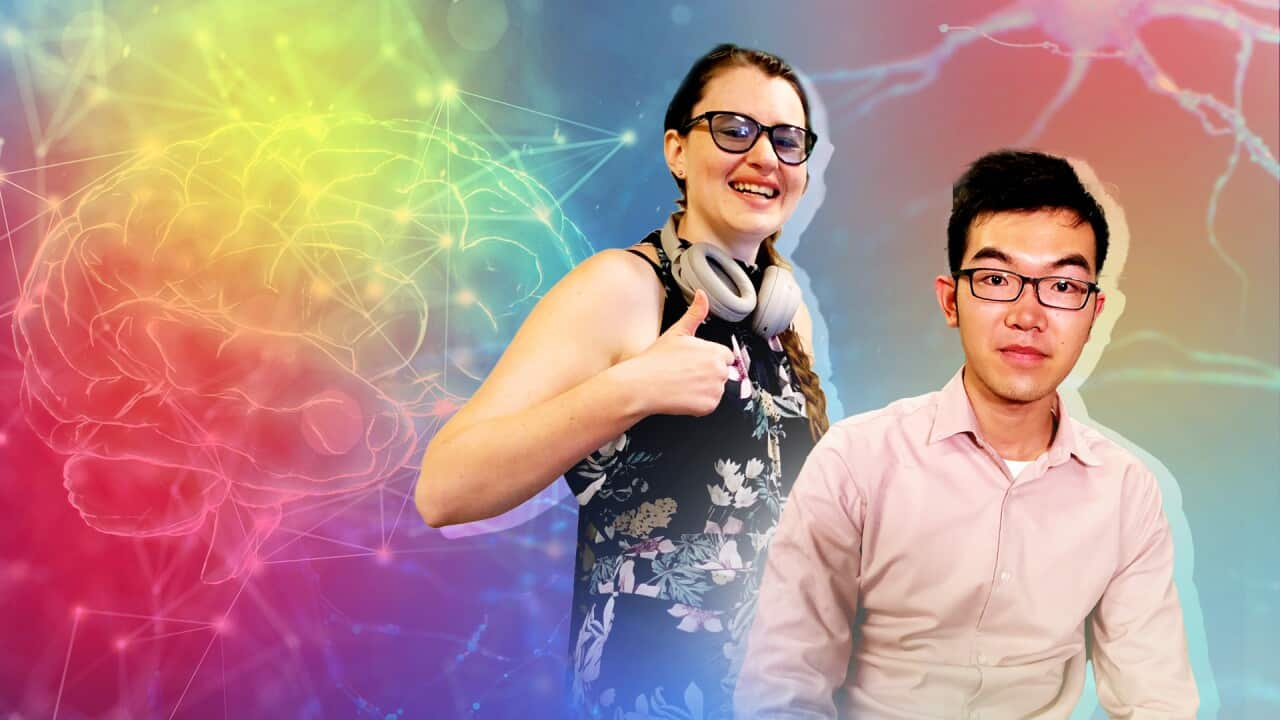As Khush Patel celebrates his 12th birthday, his mother, Stutti, is fearful for his safety and ability to speak up for himself.
Diagnosed with autism spectrum disorder (ASD) and attention deficit hyperactivity disorder (ADHD) when he was one-and-a-half years old, Khush experiences life differently than most. With a "mechanical mind", Khush loves LEGO, aeroplanes, and building aeroplanes with LEGO.
But at school, he struggles. His mother says he isn't great with social cues, is limited verbally, and has sensory issues.
"It was initially very difficult because we come from a very different cultural background than here … but gradually, we knew how to cope with his condition," she told SBS News.
Entering high school next year, Stutti worries about whether Khush will "blend into the mainstream so he can make good friendships".

Khush Patel was diagnosed with autism spectrum disorder and ADHD at a young age. Source: SBS News
"We have lots of family support there, but in terms of awareness … it's a struggle day-to-day," Stutti said.
"There is nothing really for them that can help him in the school. It's a struggle because teachers don't have any knowledge, and that's really different here."
Stutti and Khush also get support from the National Disability Insurance Scheme (NDIS), which she says helps get him access to activities that benefit him.
"We were lucky enough in terms of the resources and money [that] we just got him privately diagnosed," Stutti said. "If we went through the public system, it was like two years of waiting."
"I just can't imagine the other families who've been through that."
It's hoped Australia's first National Autism Strategy, developed by the federal government in consultation with members of the autistic community and announced Tuesday, will help to improve the lives of people like Khush.
What's in the National Autism Strategy?
The seven-year plan is aimed at creating "a safe and inclusive society where all autistic people are supported and empowered to thrive".
It makes 22 commitments to improve the lives of autistic people in four key areas:
- social inclusion
- economic inclusion
- diagnosis, services and support
- health and mental health (this area will be addressed through a separate roadmap, which is yet to be finalised)
Among the commitments are considering ways to make autism assessment and diagnoses more affordable, supporting employers to hire and retain autistic workers, and increasing sensory-friendly spaces.
The government has committed $42.3 million towards implementing the first phase of the strategy, including:
- Up to $19.9 million over four years for a peer support program to provide autistic people with "lived-experience knowledge, empathy and culturally tailored advice"
- Up to $12.2 million over five years for a dedicated body to translate autism-related research into practical, evidence-based tools and guidance for policymakers and service providers
- Up to $3.7 million over two years to evaluate existing programs aimed at improving autistic people's lives
- Up to $2.8 million over four years for an epidemiological study to establish the true prevalence of autism in Australia
- Up to $915,000 over two years for new awareness and education initiatives to "enhance community understanding … and acceptance" of autism
- Up to $445,000 for 2025-26 for new pre- and post-diagnosis resources for autistic people and their families.
It builds on the draft strategy the government released last April, before consulting with an oversight council, working groups and the autistic community.
Jenny Karavolos, co-chair of the Australian Autism Alliance and a member of the oversight council, said the release of the strategy was "monumental".
"It is the first-ever, not only national autism strategy that Australia has ever had, but is the first disability-specific strategy that exists, and that is focused purely on autism and about improving the poorer outcomes that autistic Australians have been experiencing today," she told SBS News.
The move brings Australia in line with countries such as the United States, Canada and England, which have all launched their own national autism strategies.
Why is a National Autism Strategy needed?
Autism is a lifelong condition that can affect how people think, feel, communicate, and behave.
More than 290,000 Australians are believed to have an autism diagnosis, but the actual prevalence is thought to be much higher due to under- and misdiagnosis, especially among women, girls and people assigned female at birth.
Autism presents differently in different people, but the main symptoms fall into two broad areas: difficulty with social interactions and communication, and restricted and repetitive behaviours and interests.
As with symptoms, the types and levels of support autistic people need can vary — not just from person to person, but also throughout an individual's life.
While some autistic people can live independently, with the help of minimal adjustments, others require full-time care.
Autistic people typically have much poorer social, economic, educational, and health outcomes than non-autistic people.
They're less likely than non-autistic people to complete Year 12 or the equivalent, or obtain sign any post-school qualifications, according to the Australian Bureau of Statistics.
Autistic people are also almost six times more likely to be unemployed than people without disability, and are at a higher risk of homelessness, suicide, sexual assault and harassment, and premature death than non-autistic people.

Source: SBS News
"This is not a strategy that has been done in isolation. It has been built in consultation and collaboration with autistic people living in Australia.
"Working with autistic people will remain key as we work to implement the goals of the strategy and the associated action plan — ensuring we meet the diverse needs of autistic people in Australia."
Will the National Autism Strategy actually change anything?
While Nicole Rogerson, CEO of Autism Awareness Australia, welcomes a much-needed national autism strategy, she questions its execution.
She says the National Autism Strategy is merely a "laundry list of really nice things that are never going to get implemented".
"There's lots of well-meaning ideas in here, but it's missed some of the key issues," Rogerson told SBS News.
Rogerson critiques the strategy's lack of educational policy as concerning, especially given it's a "big challenging area" for children with autism.
She says without the foundational education backbone, much of the strategy becomes unachievable.
"There's kind of no point having lots of lovely lofty goals about employment accessibility when we're not going to support children well through school. If you don't have a successful early intervention when you're little and successful years at school, your chances of employment are pretty far-fetched."
Autism Awareness Australia has also called for immediate action to address the gaps in support for autistic children losing their NDIS packages.
She says 1,000 school-aged children with autism are having their NDIS budgets reviewed each week, with 600 of those being taken off the scheme and losing support.
Some 37 per cent of all NDIS participants have listed autism as a primary diagnosis, which is the highest proportion of any disability.
According to Rogerson, the lack of educational support in the framework means that early intervention will only be accessible to a few.
"What worries me is we're just going to go back to the bad old days of not giving people with autism what we know they need, which is effective early intervention and good support to be able to be included in our community."
"We are going back to the stages where only families who could afford it will be able to get intervention and support."
"Families with cultural and linguistically diverse backgrounds, rural and regional families, they'll get nothing."
Katie Koullas, CEO of Yellow Ladybugs, also critiqued the strategy. "It must provide measurable outcomes without being diluted into road disability initiatives and stay fully focused on the autistic experience," she wrote in a statement on Instagram.
"We look forward to seeing an action plan before we can assess the difference it will make in our lives on a practical level."
Karavolos has acknowledged that not everyone will be happy with the strategy.
"We know that it won't capture every issue that people actually identified and that there will be some disappointment, but it is a fantastic foundation to improve and grow upon."






